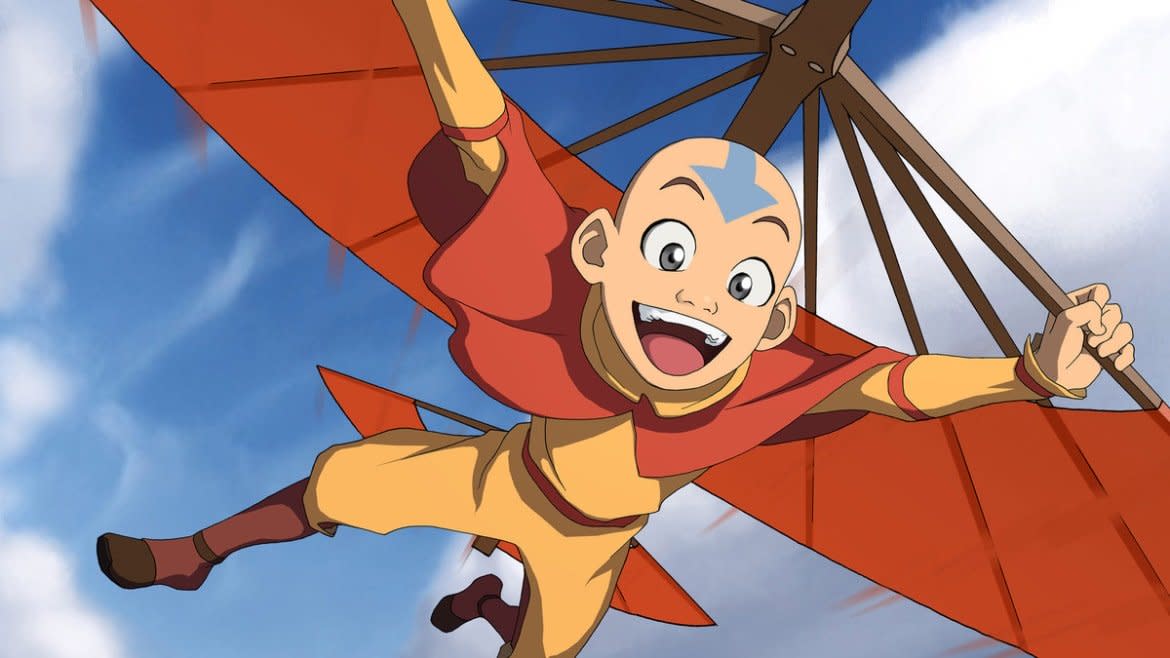‘Avatar: The Last Airbender’ Is a Timeless Masterpiece

As many of us settle in for a long weekend sheltering in place, lining up a sufficient parade of distractions will be paramount—Zoom calls, challenging puzzles, and, probably, some good TV and movies to binge. If you haven’t got that last one sorted out yet, I have but one humble suggestion—Avatar: The Last Airbender.
Most millennials, especially those on the slightly younger side, likely remember this Nickelodeon series well from its original run. It was and remains one of the most influential kids’ shows ever created—but it was also groundbreaking in its own right, a distinction that’s earned it a place in the broader TV canon. (Perhaps that’s why it was this week’s most-watched show on Netflix after its streaming debut on May 15.) For viewers of all ages, it’s a gripping and emotionally rewarding watch—especially now that it’s all available to binge.
On its face, Avatar’s premise is simple; in fact, the show’s introduction summed it up in a few sentences: “Water, Earth, Fire, Air. Long ago, the four nations lived together in harmony. Then everything changed when the Fire Nation attacked. Only the Avatar, master of all four elements, could stop them.” The show’s fictional world features elemental societies, including the Northern and Southern Water Tribes, the monastic Air Nomads, the Earth Kingdom, and, as the introduction mentions, the Fire Nation. Its central character, a bubbly 12-year-old airbender named Aang, must rise to the heroic challenge of fulfilling his destiny as the Avatar, with help from his friends—including Katara and Sokka of the Southern Water Tribe.
Avatar: The Last Airbender won a Peabody Award in 2009 for a reason—the series never talked down to its young audience, instead moving all of the complexity and tragedy of the real world into a fictional realm where a boy can ride around on a flying bison. Its whimsy provided a level of safety for its young audience to grapple with moral grey areas, themes of self sacrifice, and the horrific damage of corruption and war. One of its greatest legacies remains the redemption arc of its earliest villain, the scarred firebender Prince Zuko.
What remains astounding about this series is just how many themes it presented its young audience. Katara is a formidable, outspoken waterbender with no tolerance for sexism—but beyond that, the series also allows her and its other female characters the space to be flawed. In this universe, women can be heroes, villains, and everything in between. Disabled characters like the blind earthbender Toph and the wheelchair-glider-riding Teo were treated with dignity, moving the narrative forward and coming to the rescue of many without any of the condescension and pity that still pervades many modern, adult treatments.
Creators Michael Dante DiMartino and Bryan Konietzko also worked painstakingly to represent and reference Asian culture with respect. Each Nation’s bending technique was a specific take on traditional martial arts. DiMartino and Konietzko even consulted Media Action Network for Asian Americans vice president Edwin Zane on matters including costuming and art style.
More than anything, though, what remains unforgettable about Avatar is its epic scope. Its story spans centuries, traversing an entire world’s political history while rendering it with a level of personalized detail that makes it both comprehensible and gripping, even for viewers too young to fully grasp its real-life parallels. And it did all of this while delivering some of TV’s best running jokes. So once again, I say, get to binging—and while you do that, pour one out for that poor, unfortunate cabbage merchant.
Get our top stories in your inbox every day. Sign up now!
Daily Beast Membership: Beast Inside goes deeper on the stories that matter to you. Learn more.

